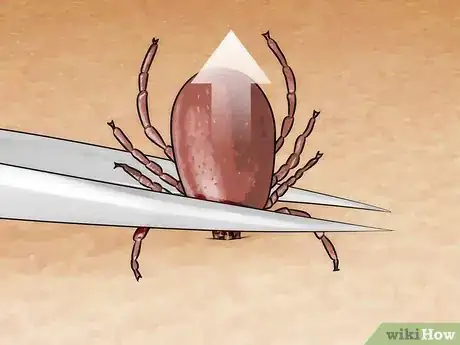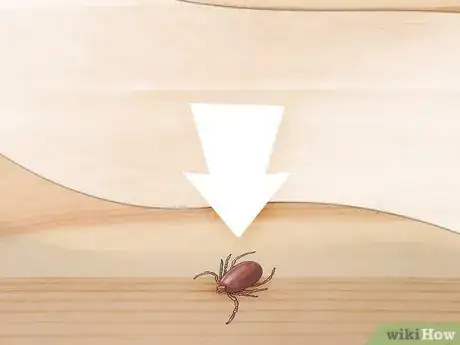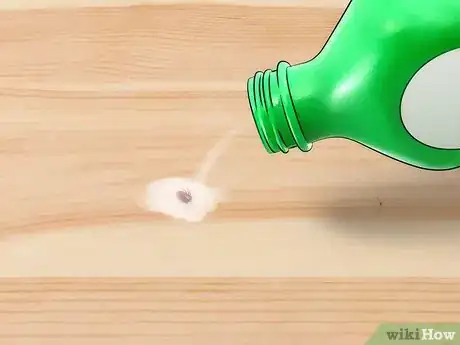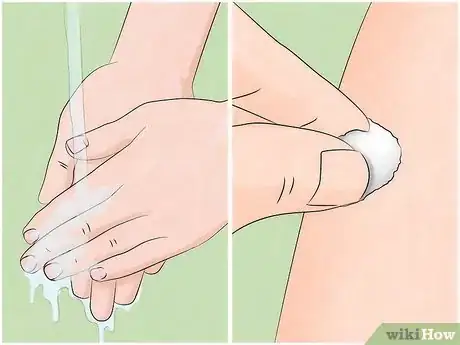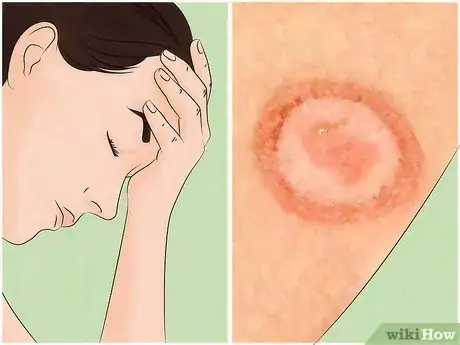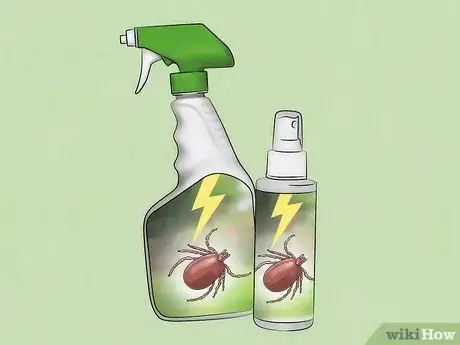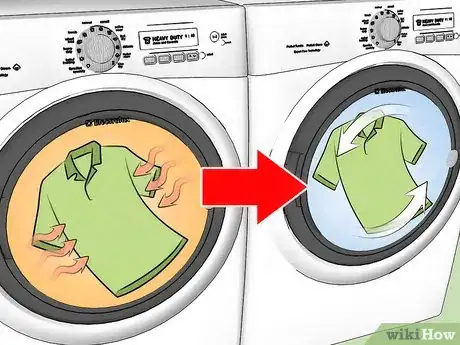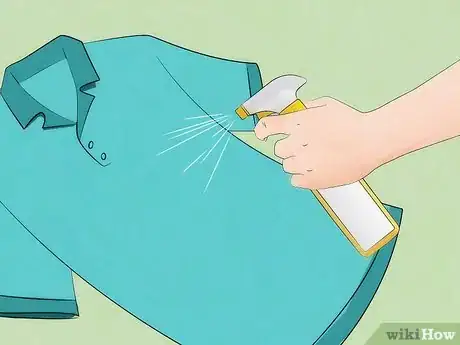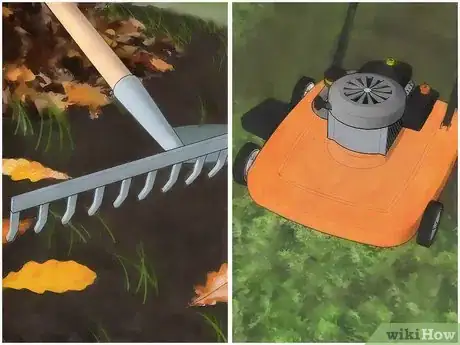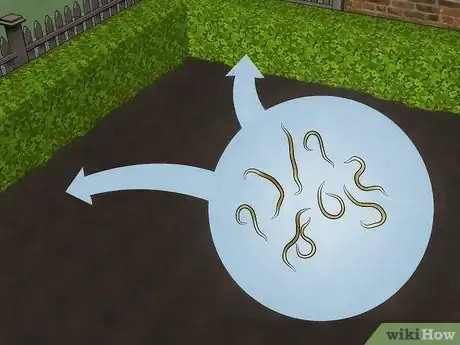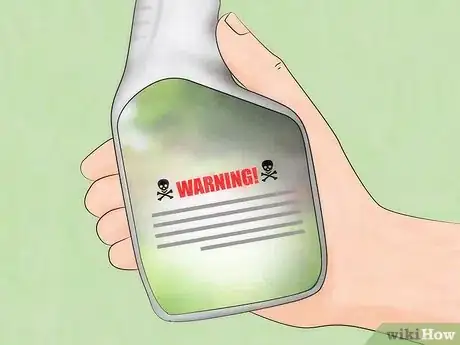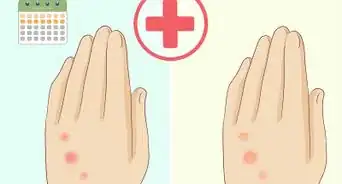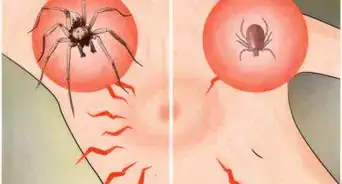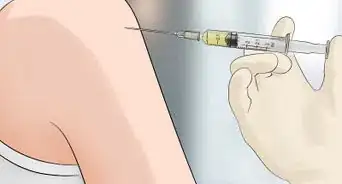This article was co-authored by Elmer Bensinger. Elmer Bensinger is a Pest Control Specialist with Eden Advanced Pest Technologies in Spokane, Washington. With over 20 years of experience, Elmer specializes in integrated pest management and products such as insecticides and rodenticides. He studied business at South Puget Sound Community College.
There are 12 references cited in this article, which can be found at the bottom of the page.
This article has been viewed 797,733 times.
To prevent the spread of tick-borne diseases, you should kill any that you see in the proper way so that it can be identified and you don't risk catching something from it. Doing so is very important for ticks you find on yourself or others because you have to kill them without damaging its body. For ticks you see on pets or outdoors, you have to be sure that you are using the right kinds of chemical treatments, or you may not get rid of all of the different species. After killing a tick, monitor your health and look for signs of a rash as these could require medical treatment.
Things You Should Know
- Remove attached ticks with tweezers, kill them with rubbing alcohol, keep the body taped to an index card for reference.
- Be on the lookout for symptoms, like fever, headache, or a bullseye rash.
- To kill loose ticks, give your pets tick prevention treatments, dry your clothes before and after washing, and spray your clothes with permethrin (note that permethrin can be toxic for cats).
- To keep ticks out of your yard, focus on clearing it regularly and making sure your yard is at least 3 feet from the edge of any forest area.
Steps
Killing an Attached Tick
-
1Remove the ticks. If the tick is fastened to a person or a pet, detach it first. Grasp the tick's head with a pair of tweezers with pointy tips. Pull slowly upward, in a straight motion.[1]
- Tweezers with wide tips may crush the tick or squeeze out infectious germs.
- Never use your bare hands. If you must touch the tick, wear disposable gloves.[2]
-
2Wrap the tick tightly in tape. Cover the tick with transparent tape on all sides. The tick will die on its own, and cannot get free.[3] This is the best method to use, since the tick will be mostly undamaged. This makes it easy for a doctor to identify the tick, if you end up showing symptoms.
- You can use a sealed, clear container instead, such as a small zip-locked bag. Check for holes and make sure it is fully sealed.
Advertisement -
3Kill with rubbing alcohol. If you do not have tape, drop the tick into a container full of alcohol.[4] It may take a while for the tick to die. Watch it or cover with a transparent lid to make sure it does not escape.
- Water will not kill the tick. If you don't have rubbing alcohol, try bleach or vinegar.
-
4Wash your hands and the bite area. Scrub with rubbing alcohol or an iodine scrub, if you have it. Use soapy water if not.[5] This reduces the chance of an infection spreading.
-
5Save the tick. Tape the dead or trapped tick over an index card. On the card, write the date you found the tick, and locations it might have come from. Store it away from pets and children.
-
6Watch for symptoms. Some ticks can spread diseases, especially deer ticks. Bring the victim and the tick to a doctor if the victim develops these symptoms within three months:[6]
- Fever or chills
- Headaches, muscle aches, or joint pain
- A rash, especially a large red "bulls eye" rash.
- Swollen lymph nodes, usually in the armpit or groin
Killing Loose Ticks on Pets or Clothing
-
1Choose a pet treatment. There are many chemicals and herbal treatments sold as tick killers for pets. Many of these can be dangerous for young animals, or for small children who play with the pet. Talk to a veterinarian first if possible.
- Use a treatment specifically for your pet's species (such as cat or dog).
- If small children or other pets are in the house, look for an oral medicine.
- Never use a treatment that contains an organophosphate. Check the ingredients for amitraz, fenoxycarb, permethrin, propoxur, and tetrachlorvinphos (TCVP).[7]
-
2Put clothes through the dryer first. Dry heat will kill almost all ticks, but wet heat might not. After walking through areas with ticks, put your clothes through the dryer. Wash them afterward, then dry again.[8]
-
3Spray clothes with permethrin. This chemical kills ticks faster than other insecticides, and is safer for humans.[9] Spray it over your clothes before a hike, and on the inside rim of shirt sleeves and trouser legs.
Exterminating Tick Populations
-
1Clear your yard. Ticks need damp and shade to stay alive. Clear your yard of leaf litter and shady hiding places. Keep grass mowed short.
- Rodents and deer can transport ticks. Keep them away by tightly covering all trash and food kept outdoors. Use a fence to keep away deer.
-
2Create a border around woodlands. If your yard is next to the woods, create a three foot wide border of dry mulch or gravel. This prevents plant growth, and makes it much harder for ticks to enter your yard.
-
3Spread nematodes. Give the ticks a parasite of their own to worry about. These microscopic worms are sold online, and come in many types. The ones sold as a tick treatment are completely harmless to humans and pets. Mix with water and spread over your yard. Keep the area moist for seven days while the worms get established.[12]
- Look for Steinernema carpocapsae or Heterorhabditis bacteriophora if you have a deer tick (black-legged tick) problem. Ask a vet about nematodes for other types of ticks.
-
4Use pesticides cautiously. Many pesticides are dangerous for pets, children, or local wildlife. If you decide to use them, hire a licensed pesticide applier for a yearly or twice-yearly visit. Before he begins, ask for a written plan with safety information, and for signs to post around your property.
- Permethrin, a common anti-tick pesticide, can kill cats and fish.
-
5Add guinea fowl to your farm. Guinea fowl hunt and eat ticks. Deer ticks are often small enough to escape, but there should be many fewer than before. Be aware that guinea fowl can be very noisy.[13]
-
6Keep an eye out for tick robots. As of March 2015, Delaware company is raising money to test the next stage of a tick-slaying robot. The ticks are tricked into latching on and drinking pesticides, killing them in a much safer way than a pesticide spray. It will be a while before an individual or even a pesticide company can buy one, but maybe one day, you'll have your own yard Terminator.[14] [15]
Expert Q&A
-
QuestionHow do you know if it's a tick or a bed bug?
 Elmer BensingerElmer Bensinger is a Pest Control Specialist with Eden Advanced Pest Technologies in Spokane, Washington. With over 20 years of experience, Elmer specializes in integrated pest management and products such as insecticides and rodenticides. He studied business at South Puget Sound Community College.
Elmer BensingerElmer Bensinger is a Pest Control Specialist with Eden Advanced Pest Technologies in Spokane, Washington. With over 20 years of experience, Elmer specializes in integrated pest management and products such as insecticides and rodenticides. He studied business at South Puget Sound Community College.
Pest Control Specialist They do look a little similar, but ticks have four legs. Bed bugs have 6 legs. This is the easiest way to separate the two visually.
They do look a little similar, but ticks have four legs. Bed bugs have 6 legs. This is the easiest way to separate the two visually. -
QuestionAre there different kinds of ticks?
 Elmer BensingerElmer Bensinger is a Pest Control Specialist with Eden Advanced Pest Technologies in Spokane, Washington. With over 20 years of experience, Elmer specializes in integrated pest management and products such as insecticides and rodenticides. He studied business at South Puget Sound Community College.
Elmer BensingerElmer Bensinger is a Pest Control Specialist with Eden Advanced Pest Technologies in Spokane, Washington. With over 20 years of experience, Elmer specializes in integrated pest management and products such as insecticides and rodenticides. He studied business at South Puget Sound Community College.
Pest Control Specialist There are definitely different kinds of ticks, but what you'll be exposed to is going to depend on where you live. You've also got dog ticks or deer ticks, so there are some species that only feed on specific animals and they may pose no threat to you. You'll need to dig around to figure out what kind of ticks live around you, though.
There are definitely different kinds of ticks, but what you'll be exposed to is going to depend on where you live. You've also got dog ticks or deer ticks, so there are some species that only feed on specific animals and they may pose no threat to you. You'll need to dig around to figure out what kind of ticks live around you, though. -
QuestionWhat do ticks look like?
 Elmer BensingerElmer Bensinger is a Pest Control Specialist with Eden Advanced Pest Technologies in Spokane, Washington. With over 20 years of experience, Elmer specializes in integrated pest management and products such as insecticides and rodenticides. He studied business at South Puget Sound Community College.
Elmer BensingerElmer Bensinger is a Pest Control Specialist with Eden Advanced Pest Technologies in Spokane, Washington. With over 20 years of experience, Elmer specializes in integrated pest management and products such as insecticides and rodenticides. He studied business at South Puget Sound Community College.
Pest Control Specialist They're very small, but you can usually see they have 4 legs, which is often a dead giveaway. They also have what might look like a long snout, which is actually their mandible.
They're very small, but you can usually see they have 4 legs, which is often a dead giveaway. They also have what might look like a long snout, which is actually their mandible.
Warnings
- Always wash your hands in soapy water after touching a tick. Ticks can carry infectious bacteria within invisible bodily excretion-fluids all over the tick's body. You'll probably be okay unless your skin is scratched, but better safe than sorry.⧼thumbs_response⧽
- Don't try to squash a tick. Ticks have very hard backs, and it is difficult to squash them without the right tweezers. More importantly, squashing the tick can spread infectious bacteria.⧼thumbs_response⧽
- Don't use home remedies for killing attached ticks. These often increase the chance of infection. This includes trying to suffocate them in nail polish or burn them with a match.⧼thumbs_response⧽
References
- ↑ http://www.cdc.gov/ticks/removing_a_tick.html
- ↑ https://www.aspca.org/pet-care/how-remove-tick-your-pet
- ↑ http://www.cdc.gov/ticks/removing_a_tick.html
- ↑ http://www.cdc.gov/ticks/removing_a_tick.html
- ↑ http://www.cdc.gov/ticks/removing_a_tick.html
- ↑ http://www.cdc.gov/ticks/symptoms.html
- ↑ http://pets.webmd.com/features/natural-insect-control-flea-and-tick-treatments-for-pets
- ↑ http://blog.aarp.org/2013/04/03/to-kill-ticks-dry-clothes-then-wash-them/
- ↑ http://www.tickencounter.org/prevention/permethrin
- ↑ http://books.google.com/books?id=RpsROVqemk8C&pg=PA236#v=onepage&q&f=false
- ↑ http://www.nlm.nih.gov/medlineplus/druginfo/meds/a698037.html
- ↑ http://www.buglogical.com/beneficial-nematodes/
- ↑ http://www.feathersite.com/Poultry/Guineas/SPPAGuineaFowlForTickControl.html
- ↑ http://www.bizjournals.com/triangle/blog/techflash/2015/03/tick-killing-robot-inventors-open-business-office.html?page=all
- ↑ http://www.ncbi.nlm.nih.gov/pubmed/25499615
About This Article
To kill a tick that’s attached to a person or a pet, start by grasping its head using a pair of tweezers in order to protect yourself from the tick’s bacteria. Alternatively, put on a pair of disposable gloves, then grasp the tick with your fingertips. Next, pull slowly in a straight, upward motion to detach the tick, then kill it by wrapping it tightly with tape on all sides. If possible, use transparent tape to make it easy for a doctor to identify the tick if you develop symptoms such as fever, joint pain, or a red rash in a bull’s eye pattern. For more advice, including how to kill loose ticks on pets or clothing, keep reading.
